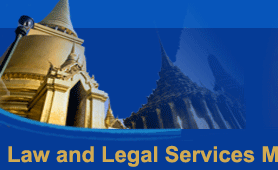



    |
|
| |
|
DNA technology is upon us. We are four long years of genetic advancement from 1997 when in the case of Lim vs. CA (270 SCRA 1), a party could not establish paternity by means of DNA testing as the Supreme Court, in an obiter dictum, commented on the novelty of the technique and the lack of facilities in the country.
Today, the use of DNA technology has gained acceptance in the field of forensic and life sciences, and courts in the USA, Europe and Asia have availed of DNA evidence in deciding cases. There is no reason, then, why DNA proof, when relevant under our Rules on Evidence, should be treated differently in the Philippines.
Before discussing DNA evidence, let us first talk about another popular forensic evidence, fingerprint. Fingerprint is the pattern of skin on the end of fingers and thumbs. By putting ink on the fingertips and pressing them on a piece of paper, an arrangement of lines is seen and there is fingerprint evidence.
Fingerprint, 109 years old today, and unique to an individual, is a powerful and proven identifier. For instance, if the evidence found at the crime scene is an individual's right thumbprint, and a suspect is identified, the right thumbprint or the "known" print is compared to that found. If the fingerprint is different, it is considered as an "exclusion" or not that of the suspect. But if the pattern of the skin in the thumb is the same, it is deemed a "match".
Fingerprints have probative force, but for many heinous crimes such as rape and murder, no fingerprints are left behind. Hence, there was a need to look for other identifying biological markers that can be taken from blood, tissue or semen. Tests for protein, cell surface, and blood groupings came about but were nowhere as remarkable as fingerprint until it was possible to read DNA.
DNA or deoxyribonucleic acid is the genetic blueprint exclusive to a particular individual. When DNA testing is carried out on a crime scene, it is performed on certain locations (loci) in a DNA sample. When a suspect's DNA is analyzed, it is done so at the same loci to make a valid comparison. If a single feature is different, it is excluded and the suspect is considered innocent. Otherwise, there is basis to prosecute.
In DNA paternity testing, the DNA profiles of the mother and the child are obtained to determine which half of the child's DNA was inherited from the mother. The other half is inherited from the father. If the man does not have DNA types in his profiles that match the paternal types in the child, he is excluded. If he has, he is not excluded as the father.
In the same vein, DNA evidence, as a tool for identification in criminal cases, works both ways. It may help clear a suspect from criminal liability or serve as proof to convict an accused. For very young victims of crimes, DNA evidence compensates for their limited or delayed memory and capability to testify in court. However, while a DNA test result may reveal that A was in the crime scene, it cannot tell how many hours A was there. It may disclose that B had sex with C but it cannot say that B forced C. Lastly, even if DNA evidence puts D in the murder scene, it cannot speak who as between D and X pulled the knife first.
Inasmuch as the responsibility of the courts is to provide the search for truth, when that process can be aided by forensic science that yields reliable results, the interests of the justice system and society are served. Besides, every person has the right to enjoy the benefits and application of scientific progress (Art. 15, International Covenant on Economic, Social and Cultural Rights) more significantly when claiming rights to due process and to be presumed innocent under the Constitution. And, every child seeking to enforce the right to know and be cared for by his/her parents pursuant to Art. 7, UN Convention on the Rights of the Child, may avail of proof allowed by the Rules on Evidence and any method other than those provided for under Article 172, Par. 2(2) of the Family Code, such as DNA paternity test, to prove parentage.
What are the issues raised against DNA evidence in the Philippines? First, there is no substantive law on DNA. I believe that this is not necessary. The use of DNA evidence, just like paraffin and fingerprint tests, need not be the subject of legislation as it is something that the courts can take judicial notice of under Rule 129, Section 2, Rules of Court. Its existence and reliability is either of public knowledge or capable of unquestionable demonstration by an expert witness.
The belief that the country is not technically ready for DNA technology used to be another issue against its use. Fortunately, the technique can now be performed in the Philippines. There are at least four (4) laboratories that conduct DNA typing which are: the National Bureau of Investigation (NBI); University of the Philippines Natural Sciences Research Institute (UPNSRI) DNA Analysis Laboratory; St. Luke's Medical Center; and National Kidney Institute of the Philippines, Laboratory Medicine Department. Efforts are underway to set up similar laboratories in the Philippine National Police (PNP) Crime Laboratory Service and at the Makati Medical Center.
The third argument opposed to DNA evidence is that the same allegedly violates a person's right against self-incrimination and the right to privacy. In 1987, however, the Supreme Court has held in People vs. Olvis (154 SCRA 513) that what is prohibited by the Constitution is the use of compulsion to extract communication or testimonial evidence from an accused, and not the taking of evidence from his body when it may be material. The ruling was reiterated in the 2000 case of People vs. Paynor (261 SCRA 615). The right to privacy, that is to some great extent a component of the right against self-incrimination will be, in the light of all these, a non-issue.
Lastly, an objection is interposed to DNA evidence because there is no Frye (US vs. Frye, 1923) or Daubert (Daubert vs. Merrill Dow, 1993) court hearing in the Philippines that sets the guidelines for its application. Under Rule 128 of the Rules of Court, for evidence to be admissible, it only has to be relevant. But, to somehow establish a standard in competency of DNA analysis as proof, we can adopt the Daubert and Frye tests. Such require courts to make preliminary assessment of whether the testimony's underlying reasoning or methodology is scientifically valid (RELIABILITY) and if it can be applied to facts at issue (RELEVANCE). The considerations include the following:
1) the technology can be and has been tested;
2) subject to peer review and publication;
3) known or potential error rate?
4) existence and maintenance of standards controlling operation, and adding the single requirement in the Frye test;
5) has attracted widespread acceptance within the relevant scientific community.
Who are the duty-holders in the application of DNA evidence? First, are the judges and the justices who act as the gatekeepers. They must receive training on the proper application of DNA technology that will be of help to them when accepting or rejecting the expert's opinion and in evaluating the factors leading to that conclusion.
The DNA expert witness also plays a pivotal role in the use of the evidence in court. The witness must be properly qualified as an expert. The gathering and chain of custody of the DNA sample must be protected from contamination so that the court will consider it in resolving the issues and in deciding the case. The expert witness must also be aware of the fact that when DNA evidence is rejected in the lower court, it is abuse of discretion on the part of the judge that must be proved on appeal.
Moreover, it is incumbent upon the DNA expert witness to work closely with the lawyers educating them about the technology. The witness must be prepared for cross-examination by the opposing party, using prior and consistent expert testimony. When testifying, the expert witness must anticipate questions that sometimes call for answers beyond the scope of area of expertise. In fine, the witness must make sure that as an expert, terms have been defined for the record confident in what he/she knows and knows that the opinion evidence counts because he/she is the expert.
What is the future of DNA evidence in the country? The 1999 Supreme Court pronouncement in the case of Andal vs. People (G.R. No. 138269-69, 26 May 1999) stating that DNA typing is a more accurate and authoritative means of identification than eye-witness testimony, was adopted in the recent case of People vs. Penaso (G.R. No. 121980, 23 February 2000).
In the year 2001 case of Tijing vs. Court of Appeals (G.R. No. 125901, 8 March 2001), the Supreme Court confirmed that the country has the facility and expertise in using DNA test for identification and parentage testing. The High Court went on to state that courts should apply the results of science when completely obtained in aid of situations presented since to reject such result would be to deny progress.
As a final note, the Hon. Chief Justice Hilario G. Davide, Jr., has remarked that: "Thus, in no small measure do we appreciate Doctor (Franklin M.) Zweig's acceptance of our invitation for him to share not only his knowledge of life sciences, but his experiences as well, in initiating judges to the new marvels of science that will inevitably invade their courtrooms," (Cells, Genes, DNA Take Center Stage", Supreme Court Benchmark, Vol. I, No. IV, Page 3, November-December 2000 Issue).
*Judge Vilches has received training on the legal and technical aspects of DNA technology provided by Perkin-Elmer Biosystems (now Applied Biosystems) at Foster City, California, USA, in October 1999; the application of DNA evidence in Crimes Against Children conducted by the US Federal Bureau of Investigation in February 2001; and on integrating DNA technology into the judicial system organized by the UP Law Center and the UPNSRI DNA Laboratory on February 1,2001.She presides over the Regional Trial Court of Manila, Branch 48, a family court, where a test case on the use of DNA paternity typing is pending. She has lectured on how to integrate DNA technology into the Philippine legal system, the use of DNA evidence in crimes against women and children, and the limits of medical and scientific evidence such as DNA in child abuse cases. Judge Vilches teaches family law at the Ateneo Law School and has been trained as a family court judge in Oxford University, England, and at the University of Nevada in Reno, USA.